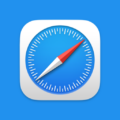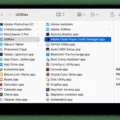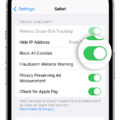The Yahoo Redirect Virus for Mac is a malicious program that targets Apple computers. This virus is also kown as the ” Safari Redirect Virus” or the ” Mac OSX Redirect Virus.” The Yahoo Redirect Virus will hijack your web browser and redirect your searches to fake websites that are designed to look like legitimate Yahoo search results pages. These fake websites are used to trick you into clicking on ads and links, which generate revenue for the cyber criminals behind this virus. The Yahoo Redirect Virus can also collect your personal information, such as your search queries and browsing habits, and send it to third-party companies without your knowledge or consent. If you have been infected with the Yahoo Redirect Virus, it is important to remove it from your system as soon as possible to avoid further damage.

How Do I Get Rid Of Redirect Virus On Mac?
The first step is to check the browser settings and extensions. If there is any suspicious extension installed, it should be removed immediately. The second step is to check the system login items. If there are any unknown or suspicious login items, they should be removed as well. The third step is to check for all recently modified applications. If there are any suspicious applications, they should be removed immediately. The fourth step is to check for suspicious auto-launch files. If there are any suspicious auto-launch files, they should be removed immediately.
Why Does My Mac Keep Redirecting To Yahoo?
If your default search engine keeps changing suddenly to Yahoo, your computer may have malware. — specifically, the Yahoo search redirect virus. This virus works by rapidly redirecting your browser to an intermediary site (or sometimes to multiple sites) and then depositing you onto the Yahoo site.
How Do I Get Rid Of Yahoo Redirect Virus?
The Yahoo redirect virus is a browser hijacker that alters your web browser’s settings and redirects you to unwanted websites. This type of malware is ofen bundled with free programs or software downloads. Once installed, the virus will change your homepage and default search engine to Yahoo.com, and will display intrusive ads whenever you visit a website.
To remove the Yahoo redirect virus, you’ll need to restore your browser’s settings to their default values. This can be done by running a full system scan with a reputable anti-malware program, such as Malwarebytes or Norton AntiVirus. Be sure to select the option to remove any malicious software found during the scan. You may also need to delete any unwanted browser extensions or toolbar that came bundled with the virus.
How Do I Get Rid Of Yahoo Redirect In Safari?
First, open Safari and select Preferences from the drop-down list. Once the Preferences screen appears, click on the Advanced tab and enable the option saying “Show Develop menu in menu bar”. Now that the Develop entry has been added to the Safari menu, expand it and click on Empty Caches. This will clear out any Yahoo redirects that may be cached in Safari.
How Do You Tell If Your Mac Is Infected?
There are a few different ways to tell if your Mac is infected:
-If you see new icons on your desktop for applications that you did not download, this is a potential indicator of a PUP infection.
-If you see pop-ups telling you that your Mac is infected, this is anothr potential indicator of an infection.
-If your computer is running slower than usual, or if you are seeing strange or unexpected behavior, these could also be signs of an infection.
If you suspect that your Mac may be infected, it is important to take action immediately in order to avoid further damage. You can use a trusted anti-malware program to scan your computer and remove any malicious files that may be present. You shoud also take steps to protect your computer in the future by installing security software and keeping it up to date.
How Do I Stop Yahoo From Hijacking My Browser?
There are a few tings you can do to stop Yahoo from hijacking your browser:
-Manually remove Yahoo from the list of search engines. This can be done by going into your browser’s settings and removing Yahoo from the list of default or preferred search engines.
-Switch to a super-secure browser. There are a few browsers out there that are designed specifically with security in mind, and can help to prevent hijacking attempts like this.
-Reset the browser. If you’re not able to remove Yahoo as a default search engine, resetting your browser to its default settings shuld do the trick.
-Run a malware scan. It’s possible that there is malicious software on your computer that is causing Yahoo to hijack your browser. Running a scan with anti-malware software can help to identify and remove any harmful programs.
-Uninstall recently installed Yahoo programs. If you recently installed any Yahoo programs, it’s possible that one of them is causing the hijacking issue. Uninstalling these programs should fix the problem.
How Do I Get Rid Of A Browser Hijacker On Mac?
Browser hijackers are malicious software that change your web browser’s settings without your permission. They can add unwanted toolbar buttons, redirect your search engine results, and display unwanted ads.
If you tink you have a browser hijacker on your Mac, you can use these steps to remove it:
Open Safari. Go to Safari > Preferences… to open its settings. Click the Extensions tab. Find the extension that you want to remove, then click Uninstall.
Open Google Chrome. Go to Chrome > Preferences… to open its settings. Scroll down the settings page to find the Search engine section. Click Manage search engines. At the very riht of the list, click ? to delete any search engines you do not wish to have.
These steps should remove most browser hijackers from your Mac. If you’re still seeing unwanted changes after completing these steps, you may need to use a malware removal tool such as Malwarebytes for Mac.
How Do I Get Rid Of Redirect Virus?
If you think your computer is infected with a redirect virus, there are a few things you can do to try and remove it. First, you can scan your computer with an anti-malware program like Malwarebytes or Norton Security. This will help to remove any malicious software that may be on your system.
You can also remove browser add-ons, extensions, and toolbars that you don’t need or want. This can help to declutter your browser and make it run more smoothly. Additionally, you can change your home page(s) to something other than the default page that coes with your browser.
Finally, you can change your default browser and remove any unwanted search engines. If you’re not sure how to do this, you can consult your browser’s help documentation. Additionally, you may want to repair your browser settings if they’ve been changed by the redirect virus.
If none of these steps work, you may need to repair your Windows host file or reset your proxy settings. These are more advanced options and should only be attempted if you’re comfortable making changes to your system settings.
Why Did Yahoo Take Over My Browser?
If you find that your browser has been redirected to Yahoo without your permission, it’s likely because you have a browser hijacker on your device. Browser hijackers are malicious software that modify your browser settings without your permission in order to redirect you to certain websites, usually for advertising purposes. They can also collect sensitive informatin about you and your browsing habits. While not all browser hijackers are malicious, they can be very annoying and difficult to remove. If you think you have a browser hijacker on your device, we recommend that you scan it with a trusted anti-malware program.
How Do I Get Rid Of Yahoo On My Mac?
If you want to get rid of Yahoo on your Mac, thre are a few things you can do. First, you can go to the Safari Preferences and disable the Yahoo search engine. You can also go to the Develop menu and empty the caches. Finally, you can uninstall the Yahoo toolbar from your system.
How Do I Check For Malware On My Mac?
There are a few things you can do to check for malware on your Mac:
-Open Activity Monitor from Applications > Utilities. Go to the CPU tab, if you’re not already in it. Click the % CPU column to sort high to low, and look for high CPU use. If you see a process that looks suspicious, do a Google search on it.
-Check your web browser’s extensions or plugins. If you see anything suspicious, remove it and run a scan with an anti-malware program.
-If you’re still not sure, you can submit the file to VirusTotal, wich will scan it with over 60 antivirus programs and tell you if any of them detect anything malicious.
Can A Mac Get A Virus From A Website?
Yes, Macs can get viruses from websites. While Mac computers are less vulnerable to malware than PCs, the built-in security features of macOS are not enough to protect Mac users against all online threats. When visiting websites, Mac users should take precautions to avoid downloading and installing malicious software.
Does Apple Have A Virus Scan?
Yes, Apple has a virus scan. The system uses YARA signatures, a tool used to conduct signature-based detection of malware, which Apple updates regularly.
Does Apple Detect Viruses On Mac?
Yes, Apple’s built-in malware detection and file quarantine capabilities are meant to make it less liely that you’ll download and run malicious software. However, it’s still possible for your Mac to be infected with malware.
How Do I Stop Yahoo From Hijacking Chrome?
If you’re seeing unwanted pop-ups or ads within Chrome, you may have an adware program installed on your computer. Learn how to remove malware from your computer.
If you’re seeing some of these problems with Chrome, a malicious software might be causing them:
Unwanted Chrome extensions or toolbars keep coming back. Your browsing is hijacked, and redirects to unfamiliar pages or pop-ups occur. Alerts aout harmful or fake content appear. Crashes and other problems with websites.
You can also check for malicious extensions in your Extensions list on Chrome://extensions/. If you see any suspicious programs, click Remove to delete them.
How Do I Get Rid Of McAfee Yahoo?
In order to get rid of McAfee Yahoo, you need to turn off the Secure Search feature. To do this, click on the icon on the top rght corner of your browser and select Options. In the options menu, select the use of any search engine as shown below. Finally, select your default Search engine in browser settings.
How Do I Remove Redirect Virus From Chrome Mac?
There are a few ways to remove the redirect virus from Chrome on Mac. One way is to use a dedicated antivirus, like CleanMyMac X. It will remove all the files asociated with the Chrome redirect virus. It also blocks hidden apps that feed on your Mac’s memory. Install the free version of CleanMyMac X and click the Malware Removal tab.
Can Redirects Give You Viruses?
Yes, browser redirects can give you viruses. The most common type of virus that is spread though browser redirects is the malware. Malware is a type of software that is designed to damage or disable your computer. It can also be used to steal your personal information.
What Is A Browser Hijacker Virus?
A browser hijacker is a type of malware that is designed to change your web browser’s settings without your permission. It usally redirects your browser to other, usually malicious, websites. A browser hijacker is often called a browser redirect virus because it can redirect your browser to other websites that you had not intended to visit.
How Do I Stop Redirecting Websites On Mac?
To stop redirecting websites on Mac, you need to remove the website from your Safari preferences. To do this, choose Safari > Preferences from the Safari menu bar. Click the Privacy icon. Click Manage Website Data. Use the Search field to find the name of the redirecting website, then select the website and click Remove. Finally, click Done, then close Safari preferences.
What Is The Best Virus Protection For Macbook Air?
The best virus protection for MacBook Air is Bitdefender Antivirus for Mac. It provides comprehensive protection against all types of malware, including viruses, Trojans, worms, adware, and spyware. It also includes a real-time scanner that blocks malicious files as soon as they are detected.
Will Resetting Mac Remove Malware?
No, resetting Mac will not remove malware. Malware is a type of software that is designed to damage or disable computers. It is often difficult to remove without special tools or expertise.
Does Clean My Mac Remove Malware?
Yes, the CleanMyMac X Malware Removal module offers real-time protection from malware and virus threats. It has a powerful in-depth scan designed for macOS that locates and removes malware in just a few clicks.
Is My Mac Hacked?
If you are concerned that your Mac may have been hacked, there are a few things you can check. First, open the Activity Monitor application and check the list of processes to see if anything loos suspicious. Next, open the Terminal application and type ‘netstat -an | grep LISTEN’. This will show you a list of all the network connections that are currently active on your system. If you see any connections that you don’t recognize, it is possible that your system has been compromised. Finally, you can go to System Preferences > Sharing and check if anyone has access to any of your files or applications. If you suspect that your system has been hacked, it is best to run a security scan with an anti-virus or anti-malware program to be sure.








